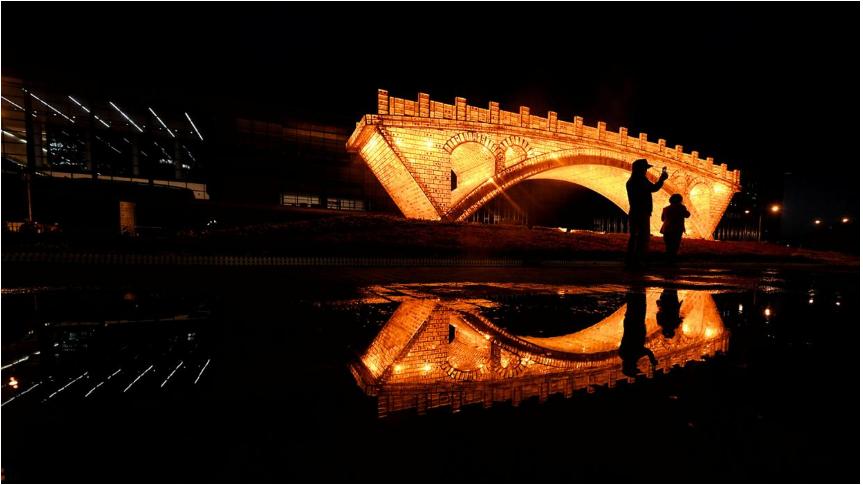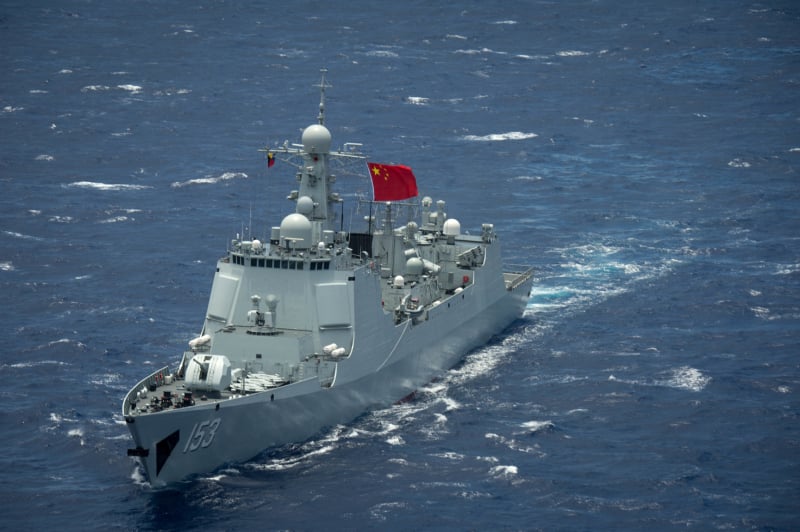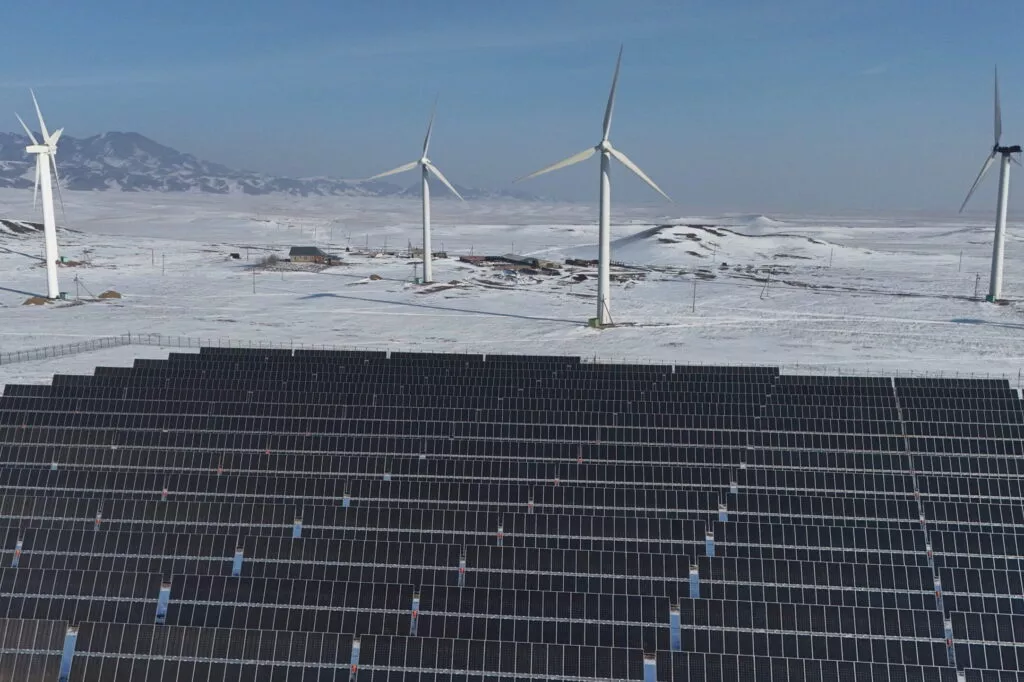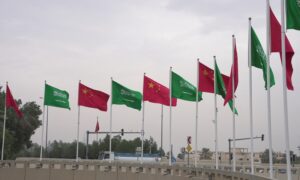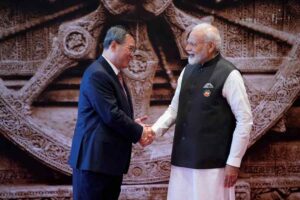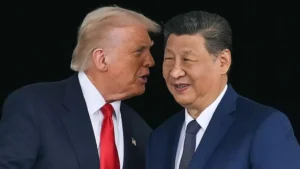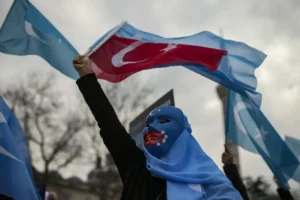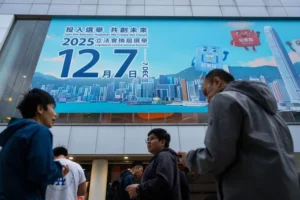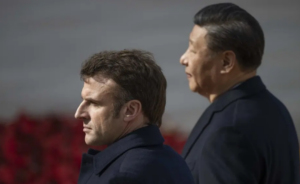Should China and the EU “Reconnect”?
Just as it did during Donald Trump’s first presidency, Beijing is seeking to capitalize on US government hostility toward allies and the international order by portraying China as a champion of stability, global prosperity, and multilateralism.
This time around, the story writes itself. Trump’s alignment with Russian President Vladimir Putin on Ukraine and his open belligerence toward the EU has provided a clear opportunity for Beijing to improve relations with Europe. The Trump II administration has, in effect, already achieved Beijing’s strategic goal of peeling Europe away from the United States. All that remains is for Beijing to make its case that shifting geopolitical realities warrant a reversal of Brussels’ trend toward viewing China more as a “rival” than as a “partner.”
As part of Beijing’s renewed rhetorical push for closer cooperation with Europe, Chinese Foreign Minister Wang Yi stated at the Munich Security Conference in February that “China is willing to synergize high-quality Belt and Road cooperation with the European Union’s Global Gateway strategy.”
The Case for Connectivity Cooperation
On paper, cooperation with China on connectivity seems promising. Both China’s BRI and the EU’s Global Gateway—at least in terms of rhetoric—prioritize green energy and health as well as digital connectivity. While sensitivities around digital infrastructure make collaboration in this area unlikely, there are clear complementarities in renewable energy and healthcare. With an expansionist Russia on its doorstep and an increasingly adversarial United States across the Atlantic, closer engagement with China is an attractive prospect for Brussels, and connectivity could serve as a pragmatic avenue to re-establish ties.
There is also potential for EU-China collaboration to bolster Europe’s standing in what China refers to as the Global South. Much of the BRI’s early narrative success stemmed from its novelty—China, a newly wealthy country, offering an alternative development model. Beijing’s own clumsy propaganda played a secondary role. Instead, local and international media amplified the story, captivated by the idea of China as a rising force.
By contrast, Global Gateway suffers from a lack of differentiation. The EU has long been a provider of development finance, and Global Gateway is largely a rebranding of existing programs rather than a fundamentally new approach. It simply does not generate the same excitement or sense of rupture with the past that made the BRI such a compelling story.
Engaging with China could allow the EU to reset the narrative. By working with Beijing on connectivity, Brussels could more effectively reposition itself as a partner rather than a donor—a framing that has often fueled post-colonial resentment. Many countries also dislike being cast as pawns in a broader competition between China and the West; cooperation with China could help the EU sidestep this dynamic.
There is also potential for mutual learning between Brussels and Beijing. Global Gateway itself is a response to China’s rise, an implicit recognition that Beijing’s approach to infrastructure finance, however flawed, holds lessons worth studying. In many ways, Global Gateway borrows from China’s model, attempting to be more transactional and more aligned with European strategic interests rather than purely developmental.
Some Chinese Adjustments
Meanwhile, Beijing has also adjusted its own approach. After years of aggressive risk-taking by its policy banks, China has sought to present the BRI as more sustainable and multilateral—claims that remains largely rhetorical.
It has also expanded its engagement in traditional aid by establishing an aid agency, the China International Development Cooperation Agency (CIDCA), in 2018, and by launching the Global Development Initiative (GDI) to operate alongside the BRI. Brussels might explore cooperation along these dual-track lines, engaging in transactional, trade-related development finance through the BRI while working with CIDCA and the GDI on more traditional aid initiatives. This approach would be particularly suitable if Brussels answers calls for a European export-import bank that more closely mirrors the BRI’s financial architecture.
Trump’s abrupt quasi-dissolution of USAID, the US development agency, also provides an opening for alternative players. While China lacks both the capacity and willingness to replace the US in development finance, and European countries have themselves begun scaling back aid, there remains a narrative opportunity. A coordinated push by Europe and China, even if largely symbolic, could help reshape global perceptions of both actors as constructive forces in development.
However, there remain plenty of reasons for Brussels to be skeptical about renewed engagement with China on the BRI, not least because the approach has been tried before.
Lessons of Past EU-China Cooperation
Wang Yi’s proposal is the first time that synergies between Global Gateway and the BRI have been publicly discussed at such a high level, but the idea has been previously floated in Chinese media and may have already been suggested in private to European leaders.
Certainly, EU-China connectivity cooperation is hardly a new idea, and in fact represents an earlier, more optimistic form of European interaction with the BRI, before disenchantment with Beijing led to the launch of Global Gateway in 2021 as a counter to the Chinese initiative. As recently as 2015, the EU-China Connectivity Platform was launched in order to explore synergies between the BRI and the EU’s Trans-European Transport Network. A list of potential projects was presented in 2019, but the cooperation led nowhere.
Similarly, a China-EU Co-Investment Fund was established by the Chinese Silk Road Fund and the European Investment Bank (EIB) in 2017, but the only joint investment to have taken place under this framework appears to have been in an equity fund managed by Cathay Capital, in 2018. Ultimately, Brussels and Beijing were unable to find enough mutual ground for meaningful cooperation on connectivity within Europe.
Part of the problem is likely to have been the nature of the BRI, which is fundamentally oriented around serving the interests of Chinese firms. Synergizing the BRI with the existing infrastructure initiatives of partner countries is standard operating procedure for Beijing. Chinese development finance is consciously sold as being demand-driven and responsive, and to a large extent it is: The majority of Chinese-financed projects associated with the BRI are picked from host country wish lists. The only condition is that Chinese firms benefit, with funding being tied to the use of Chinese contractors.
Within the EU, and for projects jointly funded by the EIB, rules on open procurement mean that Chinese-funded projects cannot be guaranteed to Chinese firms. The only BRI project in the EU funded by a Chinese policy bank, the controversial Budapest-Belgrade railway, triggered an EU investigation precisely because it was awarded to a Chinese firm without tender.
“Third-Party Market Cooperation”
After Ursula von der Leyen became European Commission president in late 2019, EU-level discussions on EU-China connectivity shifted entirely to competition, culminating in the launch of Global Gateway in 2021.
Cooperation between the BRI and EU member states, particularly France, has demonstrated slightly more vitality. Beijing promotes what it calls “third-party market cooperation” along the BRI, meaning collaboration between China and a developed country partner in third countries. This type of cooperation aligns more closely with what BRI-Global Gateway collaboration might look like than with the EU-China Connectivity Platform, which focused on synergies within Europe.
China has signed memoranda on third-party market cooperation with a handful of EU member states, including France, Spain, and Italy. According to Beijing, France is the first country to establish a “third-party market intergovernmental cooperation mechanism” with China—the two sides issued a joint statement on the topic in 2015 and signed a list of seven pilot projects in 2022.
The list of pilot projects is not published, but it is suspected to include two port projects in Nigeria: Lekki port, constructed by China Harbour Engineering Company (CHEC) and operated by French multinational CMA-CGM, and Tincan Island Container Terminal, managed by a French-Chinese consortium.
While Beijing actively promotes third-party cooperation, international firms have in reality had minimal involvement in BRI projects. Examples of cooperation remain relatively uncommon and the product of market circumstances rather than state involvement. One notable exception is the involvement of French firm Alstom and Chinese state-owned enterprise PowerChina in building and supplying the Belgrade metro. Although the details are obscure, the project appears to involve Chinese and French state finance, and to have been awarded to Alstom and PowerChina without public tender.
Chinese Firms Win EU Projects
EU-China cooperation, even when it is not named as such, is most common among EU-financed projects, which are publicly tendered and sometimes awarded to Chinese firms. For instance, Chinese companies have been awarded more than €1 billion in contracts for projects outside of the EU funded by the EIB.
The European Bank for Reconstruction and Development (EBRD) also funds a number of projects implemented by Chinese companies. While the EBRD isn’t technically a part of the EU, 54 percent of its shares are held by the EU, the EIB, and EU national governments, and it is also considered a key “Global Gateway” actor.
An interesting model seen in EBRD-financed renewable energy projects involves a Gulf developer, a Chinese contractor, and European financing. In Uzbekistan, for example, the majority of energy auctions have been won by UAE-based Masdar Energy or Saudi Arabia’s ACWA Power, with project contracts awarded to Chinese state-owned firms. These projects often involve funding from the EIB, EBRD, or German and French state development banks. Some of these projects have been referenced in Chinese state media as BRI projects, but they do not seem to be celebrated as part of Global Gateway.
European participation in Chinese financed projects is much rarer. Large multinationals like Siemens have participated in some projects as subcontractors, but Chinese-financed projects remain largely reserved for Chinese firms. A 2018 analysis by the Center for Strategic and International Studies found that only 3 percent of BRI project contractors were foreign firms—a figure unlikely to have changed significantly. Likewise, a 2020 report from the EU Chamber of Commerce in China found that only a small number of European companies in China had engaged in BRI projects, primarily as financial service providers or machinery suppliers with specialized offerings.
Brussels Needs to be Clear-Eyed
The history of EU-China connectivity projects sends a clear message: The BRI has always been about advancing “Global China Inc.” It also highlights a mixed track record: Meaningful cooperation has mostly occurred when market forces naturally align European finance or specialized goods with Chinese contractors. Beyond a few trilateral deals, like those involving China and France, strategic state-level coordination has largely fallen short.
If Brussels takes up Wang Yi’s offer, it should temper expectations of a windfall for European businesses. The same starry-eyed optimism about Chinese finance led to Europe’s cycle of enthusiasm and subsequent disenchantment with the BRI between 2013 and 2018.
As with the idea of rapprochement with China in general, Brussels should be incredibly careful not to take Beijing at its word. Chinese leaders are quick to commit rhetorically to cooperation, but often fails to substantively deliver.
That said, shifting geopolitical dynamics and Brussels’ more transactional approach to development create openings for pragmatic cooperation. The EU could pool resources for joint projects like the Belgrade metro, benefiting both European and Chinese companies. It might also explore collaboration on traditional aid projects—but only as part of a broader deal, given that such collaboration would favor Beijing. Lastly, Brussels should ensure it shares credit for infrastructure projects funded by the EU but built by China, rather than allowing Beijing to monopolize the reputational gains.
Whatever form engagement takes, Brussels must remain cautious—negotiating on its own terms, in a clear-eyed, transactional manner suited to today’s harsh geopolitical realities.
